Monday, May 22nd, 2017 and is filed under Construction, Dallas Fort Worth, Economy, Financing / Mortgage, General, Housing Affordability, Housing Market, Housing Starts
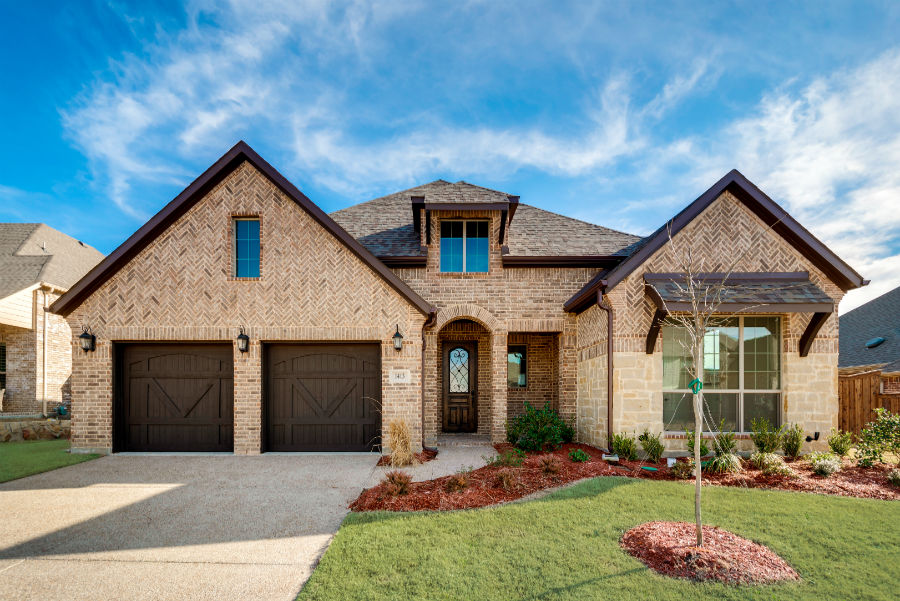
MORE HOUSING SUPPLY IN TEXAS: IT’S ON ITS WAY
For months, it seems as though we’ve been talking about housing supply and demand, not only in the Dallas-Fort Worth area, but also throughout the state of Texas. Specifically, while housing demand has been ramping up, single-family supply hasn’t been keeping pace. We’ve listed the reasons for this gap; they range from lack of labor, to municipal zoning restrictions.
But, a recent report issued by the Texas Real Estate Center at Texas A&M University1 notes that supply relief could be on the way. For one thing, the number of developed lots are increasing statewide. These MSAs are reporting the following number of developed lots, all set for houses to be built upon.
· Austin-Round Rock: 21,222
· Dallas-Fort Worth-Arlington: 48,690
· Houston-The Woodlands-Sugar Land: 46,576
· San Antonio-New Braunfels: 19,263
Another metric that is making the TAMU analysts optimistic is what is called the Texas Residential Construction Leading Index, or RCLI. This index signals future directional changes in the residential construction business cycle, based on starts and weighted permitting. And, according to TAMU, the index “reached a decade high as housing starts and weighted building permits accelerated.2”
In other words, more starts and permits means more houses.
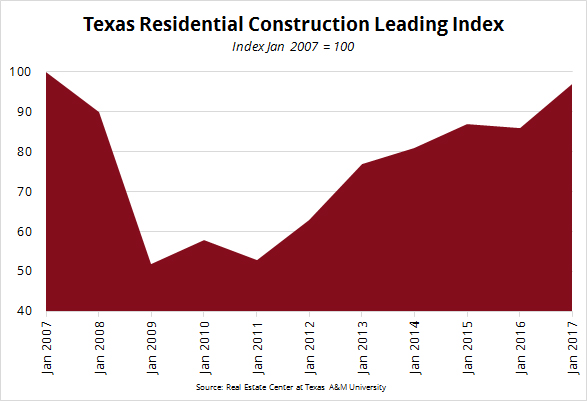
Increased Starts
Metrostudy’s Q1 2017 report on housing starts throughout the Texas metros show a decent number of single-family groundbreakings. There are, however, a few things that some of these reports point out3:
· Though new housing starts have increased in Austin, affordability remains a concern. Meanwhile, in Dallas-Fort Worth, starts remained flat year-over-year, especially among product priced below $199,999.
· Houston’s starts, year-over-year, actually decreased, though analysts believe that the market is starting to stabilize.
· Meanwhile, in San Antonio, housing starts outpaced closings, while the year-over-year percentage of starts increased.
The above is somewhat of a mixed bag, depending on location. Still, starts are doing fairly well, though more affordable product would be welcome.
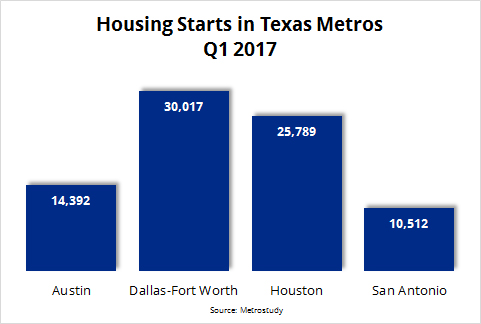
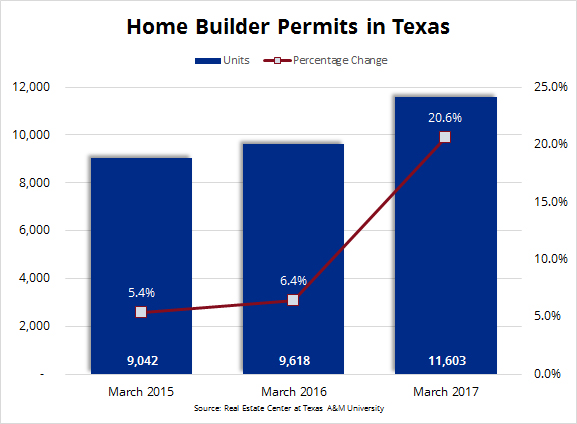
An Increase in Permitting
Meanwhile, more houses have been permitted across the state; that metric has been on the rise for the past few years. Though permits don’t automatically mean “will be built,” the fact that more permits are being issued is generally regarded as a good sign.
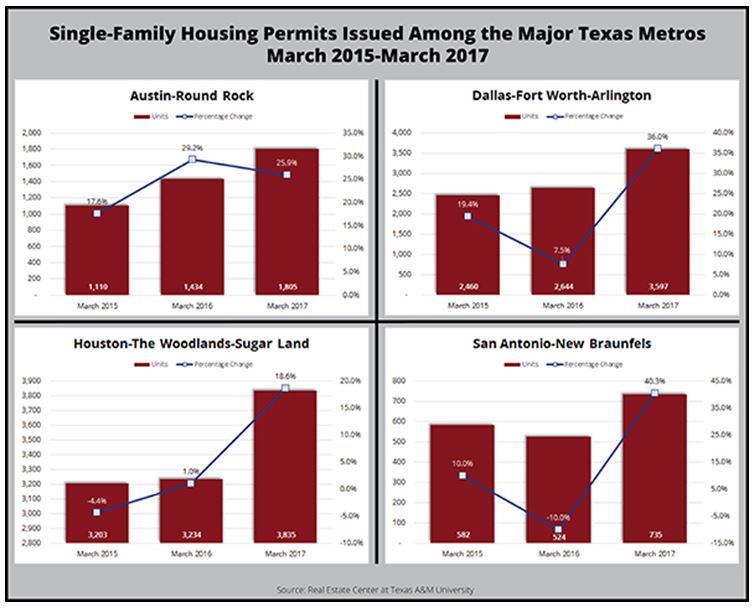
The Takeaway
One issue we didn’t discuss is demand, which is generally presented in terms of jobs created and population increases. According to the Bureau of Labor Statistics, job growth during March 2017 in the Lone Star State was 2.1%4.
Breaking it down by metro, job growth in Austin was 3.3%; 3.8% in Dallas, and 2.4% in Dallas. Though Houston’s job growth clocked in at 1.0%, this still represented an increase from the beginning of the year. So, demand continues in Texas for housing. And, while the supply does continue increasing, the question is when it will catch up to the demand.